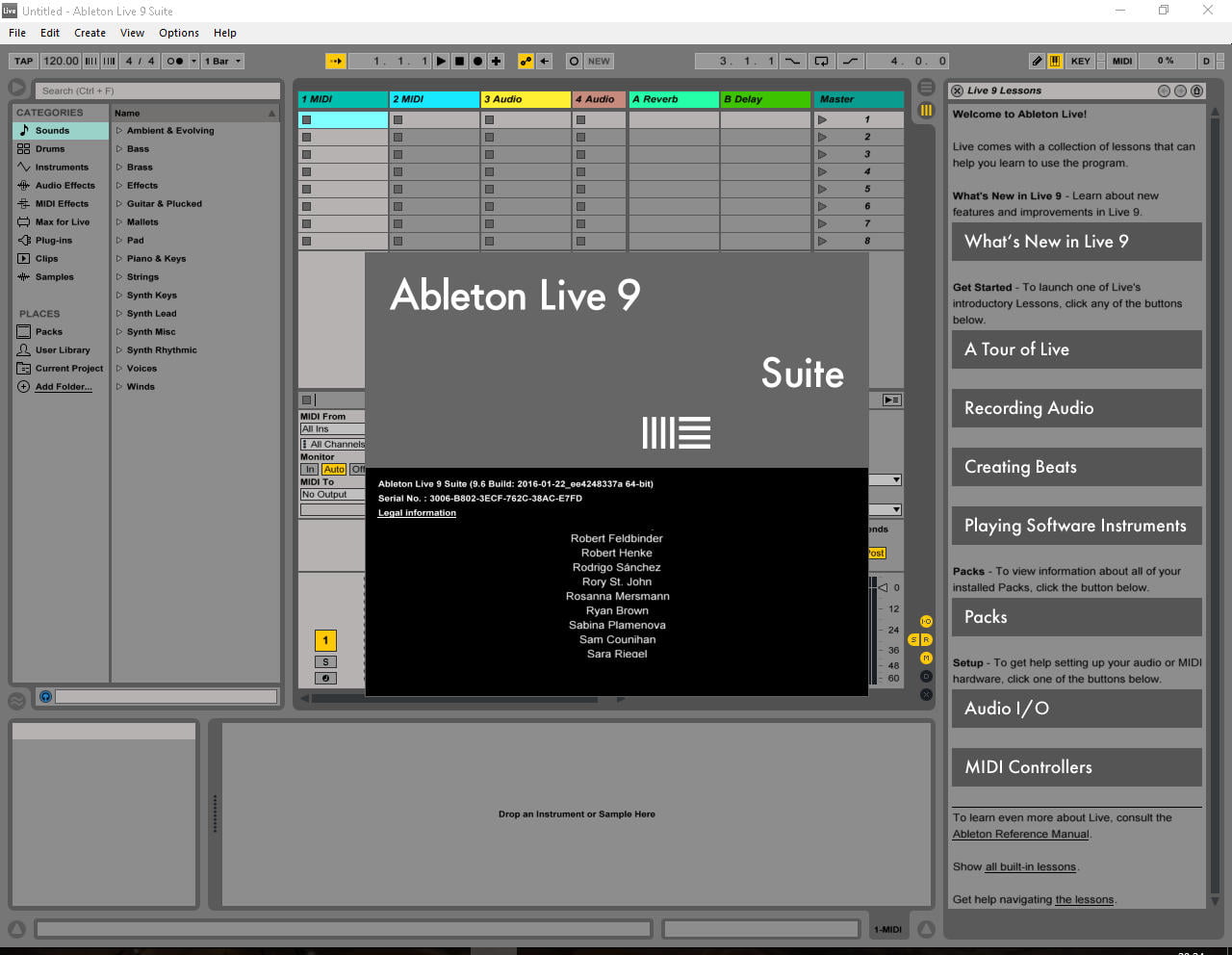

ABLETON LIVE 9 SUITE PROFESSIONAL
Operator caters for FM synthesis and Sampler offers a professional level of sampling that can accommodate multiple sample key-mapping and layering. Suite’s instrument collection, however, is a lot more comprehensive, comprising analogue-style synth sounds from Analog, rich-sounding percussion from Collision, Electric pianos from Electric and string modelling from Tension. Standard comes with the same three sample-based instrument devices as Intro, but it offers much more in terms of factory content.
ABLETON LIVE 9 SUITE FULL
Various genre styles and instrument types are included in Suite – far too many to list here, see Ableton’s website full details – but they cover most bases and alone justify the difference in cost between Suite and Standard – and that’s before we’ve even looked at the other Suite-only features.Īudio content aside, there are some other significant differences between Suite and Standard.
ABLETON LIVE 9 SUITE INSTALL
The feature set gets deeper as you move up to the next two versions, and for the rest of this review, the features discussed relate to these versions only.Īfter the 54GB install of Live Suite (Standard is a 12GB install), it’s evident from browsing the library that version 9 is more complete than ever (the complete package can be installed piecemeal if you prefer). However, you do get a perfectly respectable, though small, production centre including drum devices and sample-based instruments along with Live’s flexible real-time audio warping. These include a small number of ‘idea spaces’ in Session View (Scenes), a maximum of 16 audio/MIDI tracks, and just two audio inputs and outputs. As you’d expect, the entry-level Intro has limitations that reflect its price. Live 9 comes in three flavours: Intro, Standard and Suite. But that’s missing the point: Live isn’t the same as other DAWs, so it’s wrong to try to compare them in such a literal way, feature for feature. For instance, automation curves have only just been added, and you still can’t take the classic approach of recording lanes of audio for compiling together quickly afterwards. These ‘part-time’ users often believe that Live isn’t up to the task of full track creation and mixing, probably because Live has been slow to incorporate certain features that users of other DAWs take for granted. It’s very much the reason why many people turn to Live even if it’s not their primary platform. Session View, meanwhile, is a loop-oriented mode, letting you focus on musical ideas or sketches without needing to think about the arrangement stage. For structuring tracks, Arrangement View enables you to work from left to right in a linear fashion. Live’s primary appeal has always been its two distinct approaches to workflow and the way in which they interact.


 0 kommentar(er)
0 kommentar(er)
